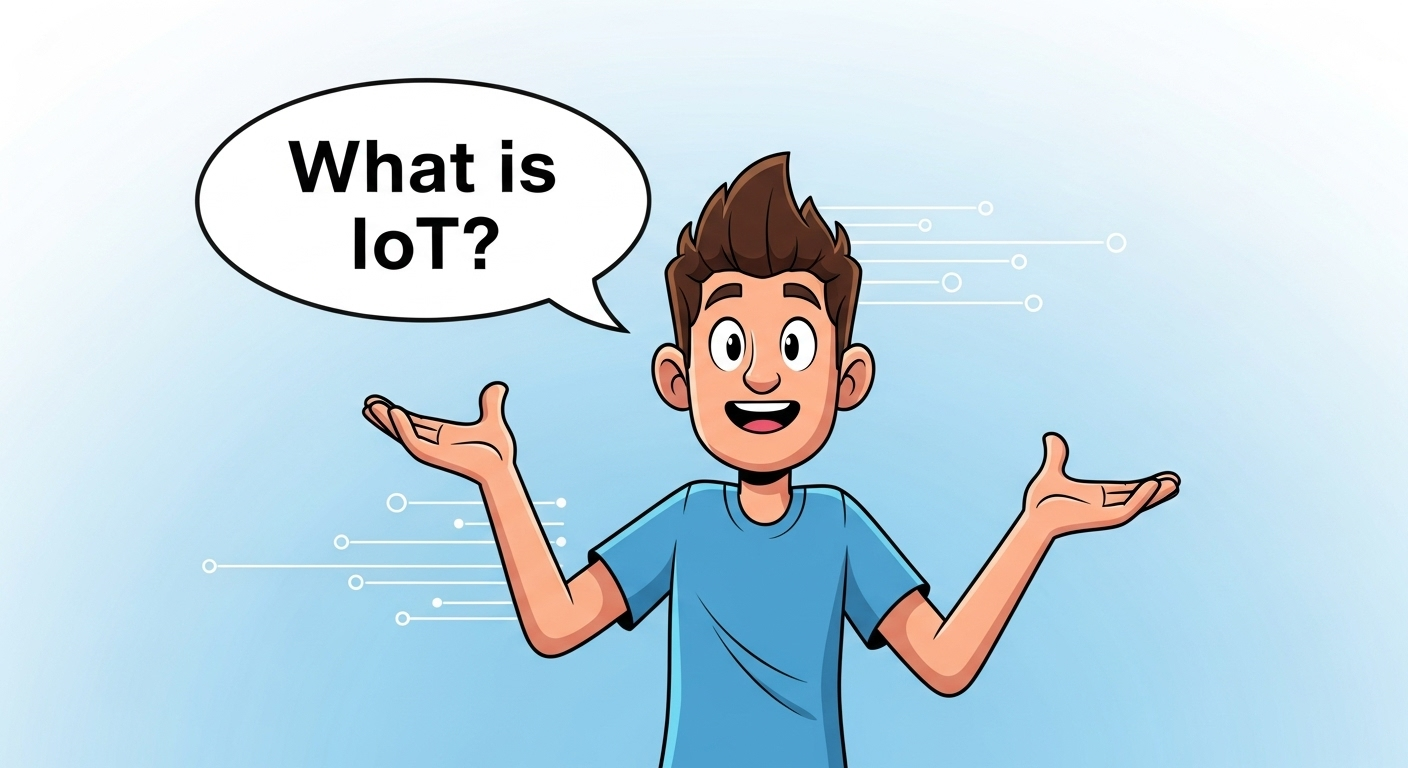
What on Earth is IoT? Let's Explain it Simply
You hear "IoT" or "Internet of Things" everywhere, and it sounds complicated, right?
Like something only engineers in a secret lab would understand.
But what if I told you the basic idea is as simple as how your own body works?
Think of IoT Like a Body
Imagine your body. You have senses (eyes, ears, skin) that collect information. You have nerves that send this information to your brain.
Your brain processes it and decides what to do. Then, your brain tells your muscles to act—like pulling your hand away from a hot stove.
The Internet of Things works in almost the exact same way, but for "things."
The "Senses" are Sensors:
A smart thermostat has a sensor to "feel" the room's temperature. A security camera has a sensor to "see" movement. These are the eyes and ears of the IoT device.
The "Nerves" are the Internet:
The information from the sensors (like "the room is 28°C") is sent over the internet (Wi-Fi, 5G, etc.). This is how the message gets to the "brain."
The "Brain" is in the Cloud:
The information is processed by software, often running on a server in the cloud.
This brain analyzes the data. For example, it checks the temperature against your preset preference ("I like it to be 24°C").
The "Action" is the Device Itself:
The brain sends a command back to the device.
The smart thermostat receives the command and turns on the air conditioner. Your hand pulling away from the stove.
So, IoT is just about giving everyday objects senses, a way to communicate, a brain to think, and the ability to act on their own.
That's it. We're connecting simple objects to the internet so they can gather information and perform tasks automatically, making our lives easier, safer, or more efficient.
In the next post, we'll break down these four parts—sensors, connectivity, data processing, and user interface—a little more.
But for now, just remember the body analogy. It's the simplest way to understand this powerful technology.